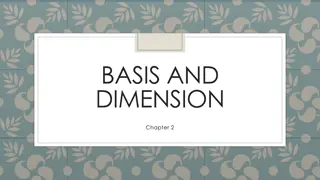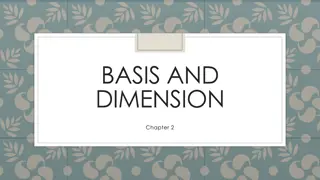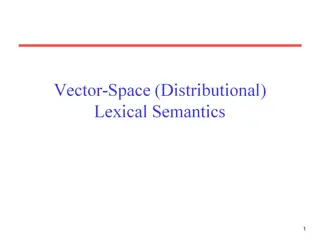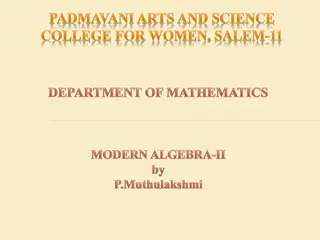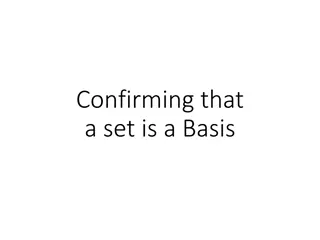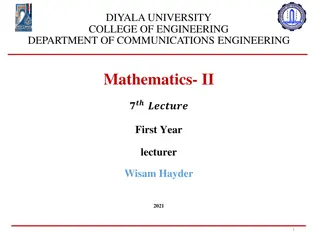
Understanding Basis of Vector Spaces
Explore the concept of basis in a vector space explained by Prof. Uday Raj Singh, including the definition, properties, and an illustrative example with a standard basis for V3(R). Learn how to determine if a set of vectors forms a basis and its significance in generating the vector space.
Download Presentation

Please find below an Image/Link to download the presentation.
The content on the website is provided AS IS for your information and personal use only. It may not be sold, licensed, or shared on other websites without obtaining consent from the author. If you encounter any issues during the download, it is possible that the publisher has removed the file from their server.
You are allowed to download the files provided on this website for personal or commercial use, subject to the condition that they are used lawfully. All files are the property of their respective owners.
The content on the website is provided AS IS for your information and personal use only. It may not be sold, licensed, or shared on other websites without obtaining consent from the author.
E N D
Presentation Transcript
Topic Basis of a vector space by ;- prof. (dr.) uday raj singh
Basis of a Vector Space IF V(F) IS A VECTOR SPACE AND S IS ANY SUBSETOF V(F), THEN S IS CALLED ABASIS FOR V(F) IF : S IS L.I. EVERY VECTOR OF V(F) IS EXPRESSIBLE AS THE (i) (ii) LINEAR COMBINATION OF VECTORS OF S UNIQUELY. I.E., S GENERATES V(F) I.E., L(S) = V(F).
Example 1. A set of vectors S = {(1, 0, 0), (0, 1, 0), (0, 0, 1)} is standard basis for V3(R). Sol. (a)Firstly,we checkSforL.I. So let, 1, 2, 3 R such that 1(1, 0, 0) + 2(0, 1, 0) + 3(0, 0, 1) = 0 ( 1, 0, 0) + (0, 2, 0) + (0, 0, 3) = 0 ( 1, 2, 3) = (0, 0, 0) 1= 0 .. . (i) 2= 0 . (ii) 3= 0 (iii)
Let M is coefficients matrix of above equations M = |M|= 1 0 Thus, S is I.I.
(b) Let (x, y, ) V3(R) (x, y, ) = x(1, 0, 0) + y(0, 1, 0) + (0, 0, 1) = A linear combinationof members of S. S generates V3(R) i.e., L(S) = V3(R) Hence, S is basis for V3(R).








